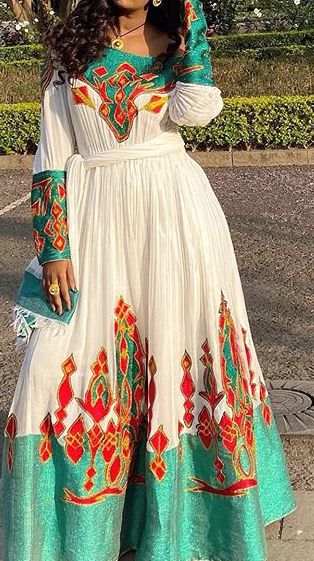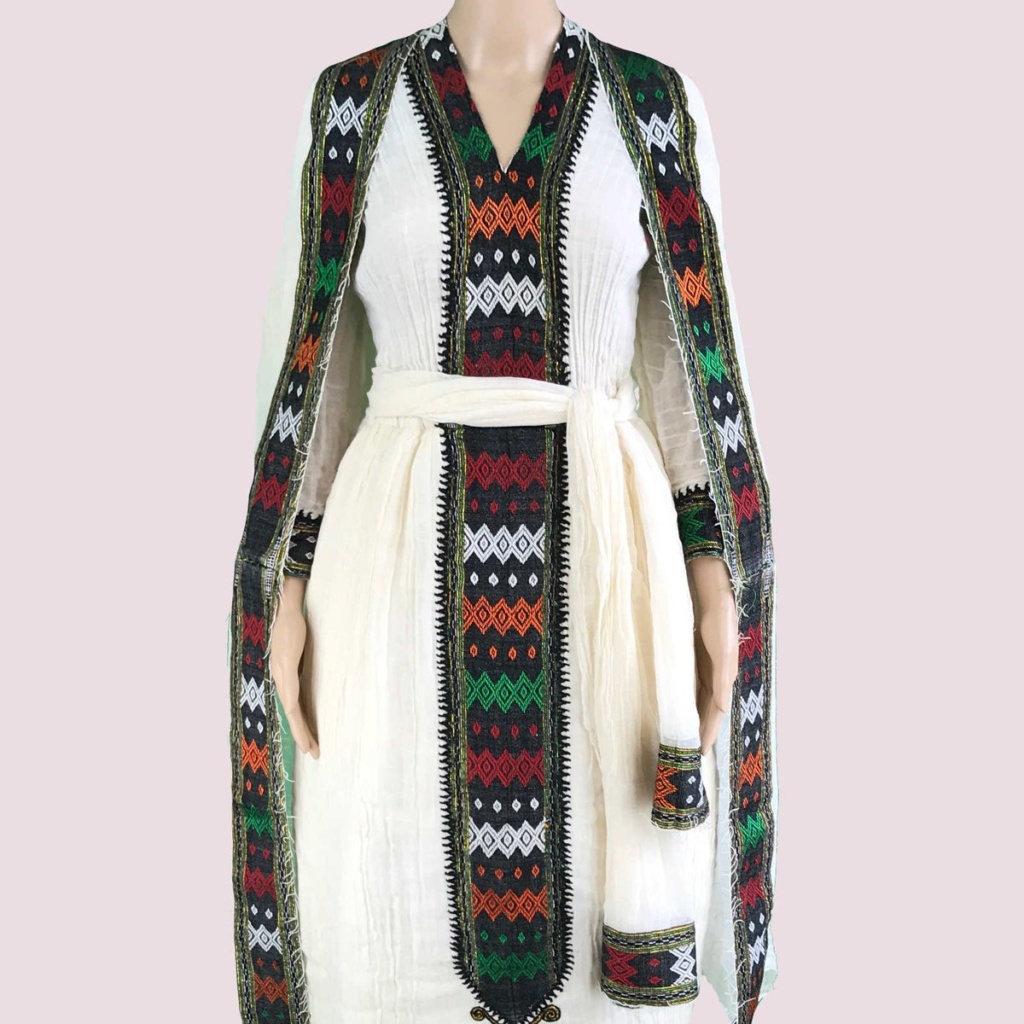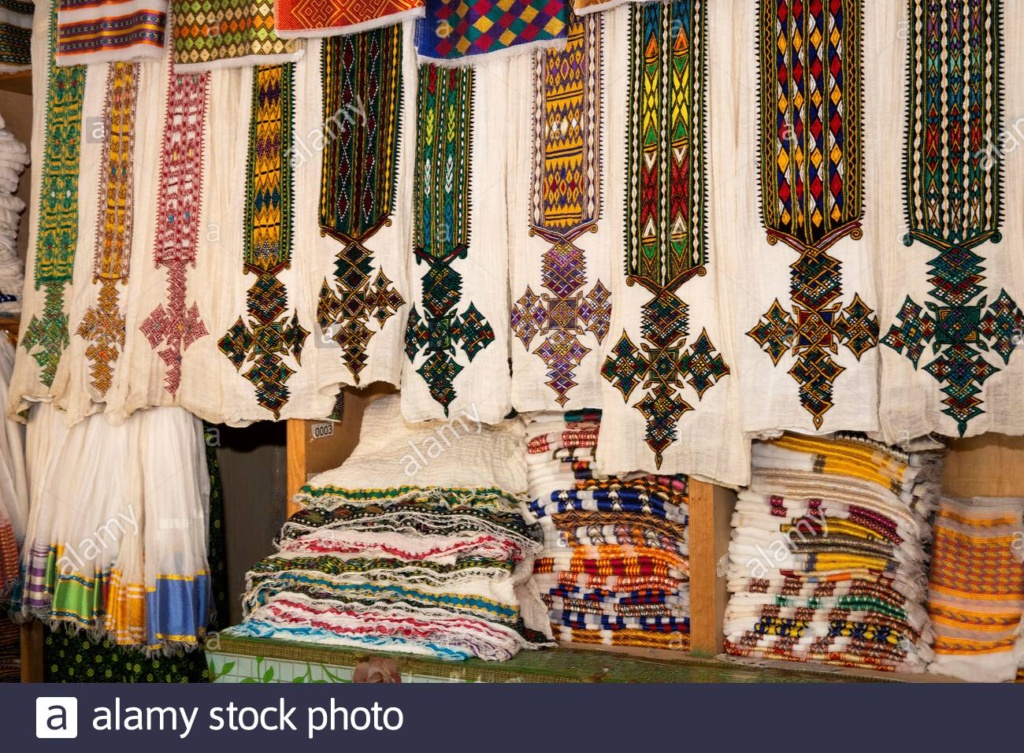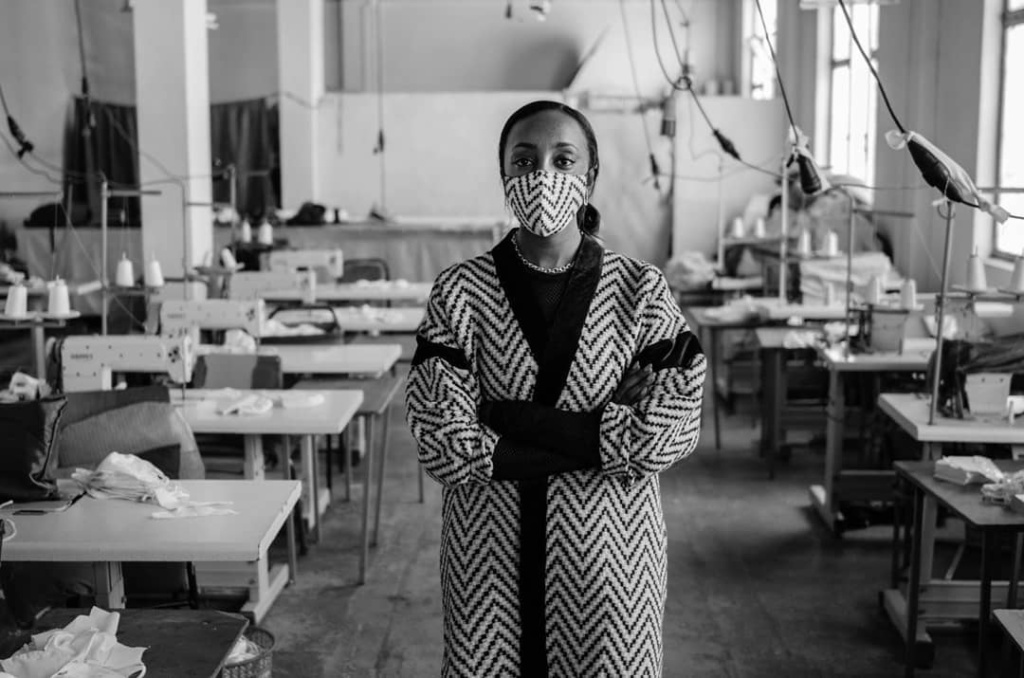This article describes the different garments of traditional and historic Ethiopian clothing.
Bernos (also transliterated Barnos, Burnos) is a wool cloak-like garment and hood woven in one piece, worn by Ethiopian and Eritrean highlanders. The term seems to be an adaptation of the Maghrebi version of Burnous. Donald N. Levine notes that the wealthier men of Menz “wear the barnos, a tailored cape made of dark wool.”
The bernos was frequently worn by the elite highlanders. Today, average citizens sometimes wear it in traditional ceremonies and at special occasions. Social status is indicated by the garment’s decorative pattern.
Ethiopian suit

An Ethiopian suit or Eritrean suit is the western name given to the traditional formal wear of the men of Ethiopia and Eritrea. It consists of a long sleeved, knee-length shirt and matching pants. Most shirts are made with a Mandarin, band, or Nehru collar. The suit is made of chiffon, which is a sheer silk or rayon cloth. A shawl called a netela or a kuta is wrapped around the suit. During the opening ceremony of each Summer Olympics during Parade of Nations, the Ethiopian team marched in white suits.
For informal events, men wear the Ethiopian dashiki. The main difference between the dashiki and Ethiopian and Eritrean suits is the collar. The dashiki does not have a collar. The dashiki is similar to the style worn in West Africa. However, Ethiopian and Eritrean dashikis are usually white, off-white, or natural cotton. The front is decorated with Ethiopian and Eritrean themes and motifs. For formal events, the dashiki suit is worn and consists of a dashiki shirt and matching pants.
In the United States and the Caribbean, Ethiopian and Eritrean suits are also worn by Rastafarian men. Ethiopian and Eritrean suits are also worn for weddings, church and synagogue services, as well as other special occasions.
Gabi (clothing)
Gabi (Ge’ez: ጋቢ) is a handmade cloth worn by Eritreans and Ethiopians. It is worn over the shoulders and upper body and is made out of cotton. Unlike the two-layered kuta (worn by men) and netela (worn by women), it consists of four layers. Both men and women can wear it. Most of the time, the elderly wear it.
Habesha kemis is the traditional attire of Habesha women.
The ankle length dress is usually worn by Ethiopian and Eritrean women at formal events, holidays and invitations. But it comes in many forms nowadays. It is made of cotton fabric, and typically comes in white, grey or beige shades. Many women also wrap a shawl called a netela around the formal dress.
Kuta is a handmade cloth many Eritrean and Ethiopian men use to cover their head and shoulders when they wear clothing made out of chiffon, especially when attending church. It is made up of two layers of fabric, unlike gabi which is made out of four. Netela or netsela is the female version.
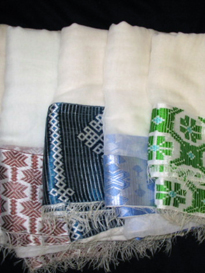
Netela is handmade scarf-like two-layered cloth made of cotton worn by Ethiopian and Eritrean, exclusively intended for women. It is very well known and commonly worn by the women and men of Ethiopia and Eritrea. A neṭela (ነጠላ) is a handmade scarf-like cloth made of cotton. It is very thin and delicate, with the texture of gauze. The netela has only two layers and is quite large, measuring about 63 x 102 inches. It is white with colorful intricately woven borders called ṭibébé (ጢቤቤ). The tibebe is between 1 and 2 inches at each end, with two variations: one composed of only one color and the other with multiple colors and patterns.
The netela can be worn in different ways. For general wear, the netela covers the back and shoulders and the border is folded up over the right shoulder. However, when attending church the two layers of the netela are opened and the border goes over both shoulders. When the border is worn around the face or shoulders, it is a sign of mourning, but in moments of leisure the border goes over the left shoulder.
There are other textiles similar to the netela. There is the foṭa (ፎጣ), a colorful shawl-like garment measuring 58 x 105 inches. Fotas usually have checkerboard designs and are simply wrapped around the shoulders or over the head as a shawl. There is a third kind of textile called donċho (ዶነጮ), which is a very long cotton sash with a border in color; it is only worn by married women. There are types that can measure up to 26 feet long.
A zuria is a dress worn by the Tigrinya women in Eritrea and Ethiopia. Traditional zurias go to the ankles, sometimes with a gauze hood around the head and shoulders. Zurias come in different forms and designs with an extra sheen due to the demands of fashion. Zurias are worn during holidays, weddings, or parties.
